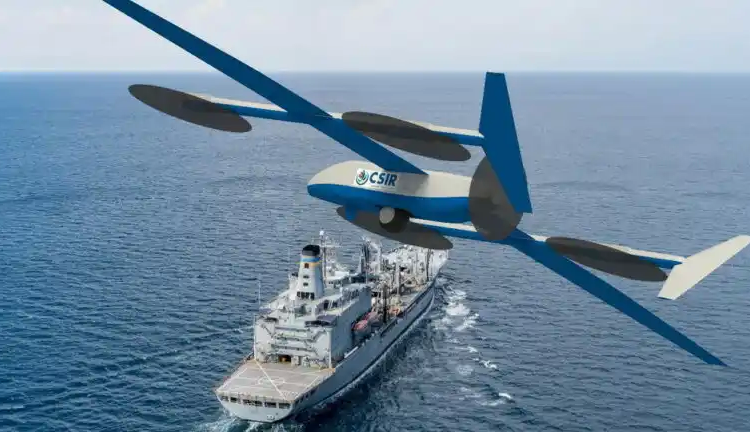The Council for Scientific and Industrial Research (CSIR) continues to prioritize green-energy technologies, as it builds hydrogen-powered unmanned aerial vehicle (UAV) using locally developed fuel cell technology.
CSIR aims to support South Africa’s efforts to decarbonise aviation by 2050. With that, Kevin Jamison and Purusha Naidoo, systems engineers at the CSIR, said in November at a presentation to the Aeronautical Society of South Africa that the development of the UAV follows the Department of Science and Innovation’s Hydrogen Society Roadmap to develop a sustainable and competitive hydrogen economy in South Africa by 2050.
The new hydrogen-powered drone will be completed in 2026, four years after CSIR began building, and the technology could spearhead the development of fuel cells for hydrogen-powered general aviation aircraft between 2026-2029, and hydrogen-power for regional airliners between 2029-2034.
CSIR says the hydrogen-powered drone project intends to “develop, demonstrate and prove an integrated airborne hydrogen fuel cell propulsion system for UAVs, and license the fuel cell propulsion system to a local entity for qualification, industrialisation, and commercialization.”
The UAV, which is optimised for hydrogen propulsion, will also be licensed to a local entity for qualification, industrialisation and commercialization.
The technical specifications includes a fixed wing, multi-rotor vertical take-off and landing (VTOL) design. Hydrogen fuel cells are considered quieter than fuel, and are suitable for long endurance missions than batteries, but are more costly.
The new drone will be aimed at both civil and military applications, including long endurance patrol, long range monitoring, and long range surveillance, with a reconfigurable payload bay capable of carrying up to 5 kg.
According to South Africa’s defenceWeb, the endurance is intended to be greater than ten hours and maximum operating altitude nearly 5,000 metres above sea level.
CSIR has a diversified engine portfolio for a wide range of missions, in 2019, it announced that it was developing a gas turbine engines for UAVs.
The gas turbine engine would produce 100 kg thrust optimized for stand-off weapons, unmanned aerial vehicles (UAVs) and gliders. The CSIR compressor design is highly scalable, and can be converted to larger bypass engine architectures.
In 2017, CSIR said it was planning to develop a fuel cell version of its Long Endurance Modular UAV (LEMU) unmanned aerial vehicle (UAV), in addition to its electric and internal combustion variants, which are due to fly in 2018.
The LEMU UAV is a twin-engine drone that first flew in 2009, and is an extended range version of the original CSIR Modular UAV research platform.
There are two variants; one with an internal combustion engine and another with an electric engine. The max take-off weight is 65 kilograms with up to 20 kilograms of payload capacity.
The internal combustion engine version of LEMU is powered by two DLE 55RA engines fitted with fuel injection systems.







